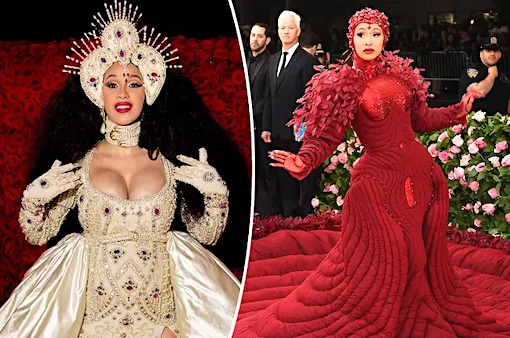The Metropolitan Museum’s annual Gala, superintended by Vogue’s Anna Wintour, is taking place tonight. The event’s theme is “Gilded Glamour,” and as usual celebrities major and minor are being photographed on the red carpet in more or less ridiculous outfits.

The Gala is being widely abused in conservative media as out of touch, in view of the fact that Americans are suffering due to Bidenflation and other liberal maladies. It is easy to feel sympathetic to such critiques, especially since just about everyone associated with the Gilded Glamour evening seems to be a clueless lib, and some features–masked servants serving unmasked celebrities, since the virus knows a celebrity when it sees one!–are worthy of ridicule.
On the whole, though, I am less critical than many conservatives. Just because we have an unbelievably sinister and incompetent administration doesn’t mean we shouldn’t have any fun.
What I want to highlight for now is the possibility that the Met Gala isn’t all bad. Vogue has a huge layout on the event, in which this item might get lost: “The Statue of Liberty Took Center Stage at the Met Gala.” It seems that the statue’s presence is unironic:
When Met Gala guests walk into the Metropolitan Museum of Art’s Great Hall on Monday night—an entrance designed by one of the Gilded Age’s greatest architects, Richard Morris Hunt—another artistic homage to the era will greet them: the Statue of Liberty’s eternal flame of enlightenment.
I am not sure enlightenment is quite the theme, but read on.
The centerpiece is a modern interpretation of the monument that has served as an American emblem for more than a century. When it was first erected in New York Harbor in the 1880s, it was a beacon of new beginnings for the millions of immigrants arriving to Ellis Island. As time went on, it morphed into a symbol that encapsulated America’s values of freedom, hope, and bravery not just for its countrymen, but the entire world.
You wouldn’t normally expect to hear that from liberals. I read on, expecting a turn for the worse. But it didn’t come:
Valentino says that it was important to him to put forth an uplifting American symbol in the Great Hall—especially in a polarizing age when the country’s threads seemed to be pulling apart rather than sewing together. “I’m hoping that this sculpture will be a reflective moment and allow us to think about what these symbols mean to us in a personal way,” he says.
***
Event producer Raul Àvila collaborated with Valentino to put the whole thing together. It was a poignant project for Àvila, who immigrated to the U.S. in 1984. “It is a dream in every sense of the word to be able to produce and design for Vogue and the Met Museum after such a humble upbringing in Colombia. My team consists of immigrants from Lebanon, Syria, St. Lucia, Paris, Brazil, and more, as well as from across the United States,” he says. “We all agreed that the goal when crafting was to remind everyone that the American dream is still alive and continues to modernize while burning strong for all.”
I say, halle-freaking-lujah. Let’s give credit where it is due: the venue may be the Met, the locale may be Manhattan, the crowd may be mostly clueless, but even there, the flame of freedom has not been extinguished. This is the unironic statue of the Statue in the museum’s Great Hall:
Let freedom ring!
Notice: All comments are subject to moderation. Our comments are intended to be a forum for civil discourse bearing on the subject under discussion. Commenters who stray beyond the bounds of civility or employ what we deem gratuitous vulgarity in a comment — including, but not limited to, “s***,” “f***,” “a*******,” or one of their many variants — will be banned without further notice in the sole discretion of the site moderator.